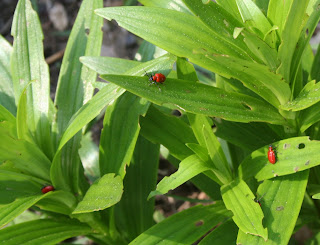While Veteran's Day is the day we celebrate all soldiers who have served our country, Memorial Day is the day we remember and honor those soldiers who made the ultimate sacrifice for freedom and died defending our country and its ideals.
This year, Memorial Day has very special meaning for us.
As members of Soldiers' Angels, we have been supporting soldiers who are serving in Afghanistan and Iraq for five years. In 2010, we adopted an entire unit of 35 soldiers, members of the 101st Airborne Combat Air Brigade, 101st Airborne Division, soldiers from Fort Campbell, Kentucky who were based at Kandahar Air Base in Afghanistan.
In addition to the soldiers of the 101st, we also supported another 12 soldiers, members of a combined joint special operations task force serving in Tarin Kowt that the 101st CAB brought mail and supplies to. We sent dozens of letters every week and more than two dozen care packages every month, including complete meals, toiletries, and snacks for the special forces soldiers. We also sent each of our soldiers a Christmas stocking stuffed with goodies from their "Wish List". (That was a major production but we pulled it off!)
On September 21, 2010, the U.S. suffered one of the most devastating losses of the entire war when a Black Hawk helicopter, tail #517, crashed, claiming the lives of 9 soldiers and sailors.
Five soldiers were members of the 101st and four were sailors, three of them Navy SEALs and the fourth, a Navy cryptologic technician assigned to a Naval Special Warfare unit.
Despite not having met any of these soldiers or knowing them personally, this was very upsetting for us. We sent the soldiers of "our" units everything from shampoo to deodorant, tooth brushes and tooth paste to beef jerky, and cans of chili to Doritos, fleece blankets, socks and underwear, and lots of candy. We corresponded with them, have a scrapbook full of pictures and emails, and we held every one of them very close to our hearts.
 |
| Capt. Nick Craig |
Our main contact for the unit during that time was Capt. Nick Craig, a Black Hawk pilot who flew with several of the soldiers who were killed and helped in the recovery process. Nick has been given the honor of designing the memorial that will be built at Fort Campbell to honor the soldiers who died. We plan to attend the unveiling of the memorial when it is dedicated.
Nick has also been tasked with raising the funds required for the memorial. We don't often ask our friends to donate to a cause that we believe in, but this is one time that we are asking all of our family and friends to help this most noble cause. Please make a donation to help fund the memorial HERE. Nick has posted some video and links to some of the news reports of the crash if you aren't familiar with it.
When he was first asked to design the memorial, Nick sent us photographs of memorials that inspired him and described his plan for this monument. He has created a design that will be a wonderful tribute to all of the soldiers and sailors who died. Please help us to help his dream become a reality.
Today we are remembering and honoring the following soldiers and sailors with flags placed around the circular rose and cottage garden in front of our home. The roses and peonies are budded and we hope they begin to bloom this weekend.

The soldiers and sailors we are remembering are:
 |
| Chief Warrant Officer Matthew G. Wagstaff |
 |
| Sgt. Marvin R. Calhoun Jr. |
 |
| Chief Warrant Officer Jonah D. McClellan |
 |
| Maj. Robert F. Baldwin |
 |
| Staff Sgt. Joshua D. Powell |
 |
| Petty Officer 2nd Class Adam O. Smith |
 |
| Lt. Brendan J. Looney |
 |
| Senior Chief Petty Officer David B. McLendon |
 |
| Petty Officer 3rd Class Denis C. Miranda |
Here is our garden tribute to the soldiers and sailors who died on September 21, 2010 in the crash of Black Hawk Tail #517.

Please make a donation in support of the memorial for these soldiers and sailors. You can click HERE to make a donation.










































